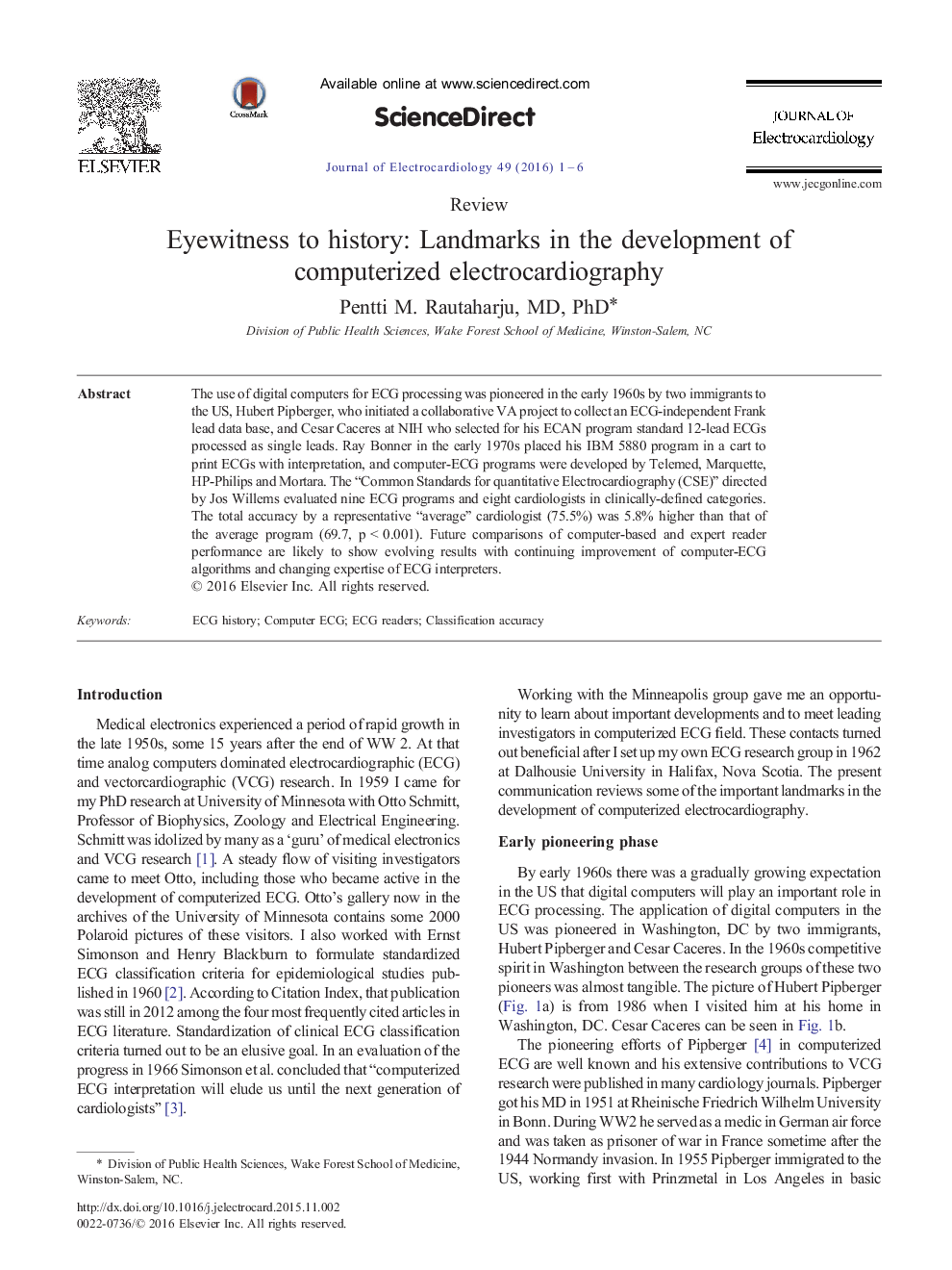| Article ID | Journal | Published Year | Pages | File Type |
|---|---|---|---|---|
| 2967328 | Journal of Electrocardiology | 2016 | 6 Pages |
Abstract
The use of digital computers for ECG processing was pioneered in the early 1960s by two immigrants to the US, Hubert Pipberger, who initiated a collaborative VA project to collect an ECG-independent Frank lead data base, and Cesar Caceres at NIH who selected for his ECAN program standard 12-lead ECGs processed as single leads. Ray Bonner in the early 1970s placed his IBM 5880 program in a cart to print ECGs with interpretation, and computer-ECG programs were developed by Telemed, Marquette, HP-Philips and Mortara. The “Common Standards for quantitative Electrocardiography (CSE)” directed by Jos Willems evaluated nine ECG programs and eight cardiologists in clinically-defined categories. The total accuracy by a representative “average” cardiologist (75.5%) was 5.8% higher than that of the average program (69.7, p < 0.001). Future comparisons of computer-based and expert reader performance are likely to show evolving results with continuing improvement of computer-ECG algorithms and changing expertise of ECG interpreters.
Keywords
Related Topics
Health Sciences
Medicine and Dentistry
Cardiology and Cardiovascular Medicine
Authors
Pentti M. MD, PhD,
